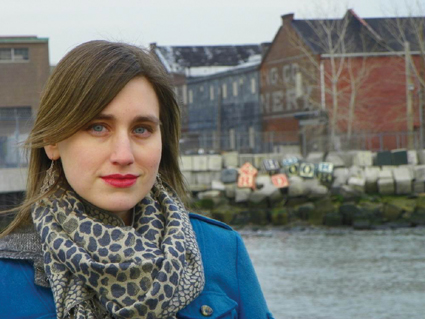Brooklyn Artist Julia Whitney Barnes: Paintings to Ceramics to Murals

B%20Julia%20Whitney%20Barnes.jpg
By Mike Weiss
Brooklyn Daily Eagle
WILLIAMSBURG — At the Front Room gallery in Williamsburg is a 5-foot-tall painting, on which a cool muted blue moves like a stream through an abstract landscape of blazing orange-reds. Within this landscape, the natural forms of clouds and trees contrast with the fractured struts of a tree house. It is a confluence of tensions, a signpost in a colorful twilight zone where passages of dark oblivion compete with swirling steps to a heavenly window, a small escape hatch to the freedom of an open sky.